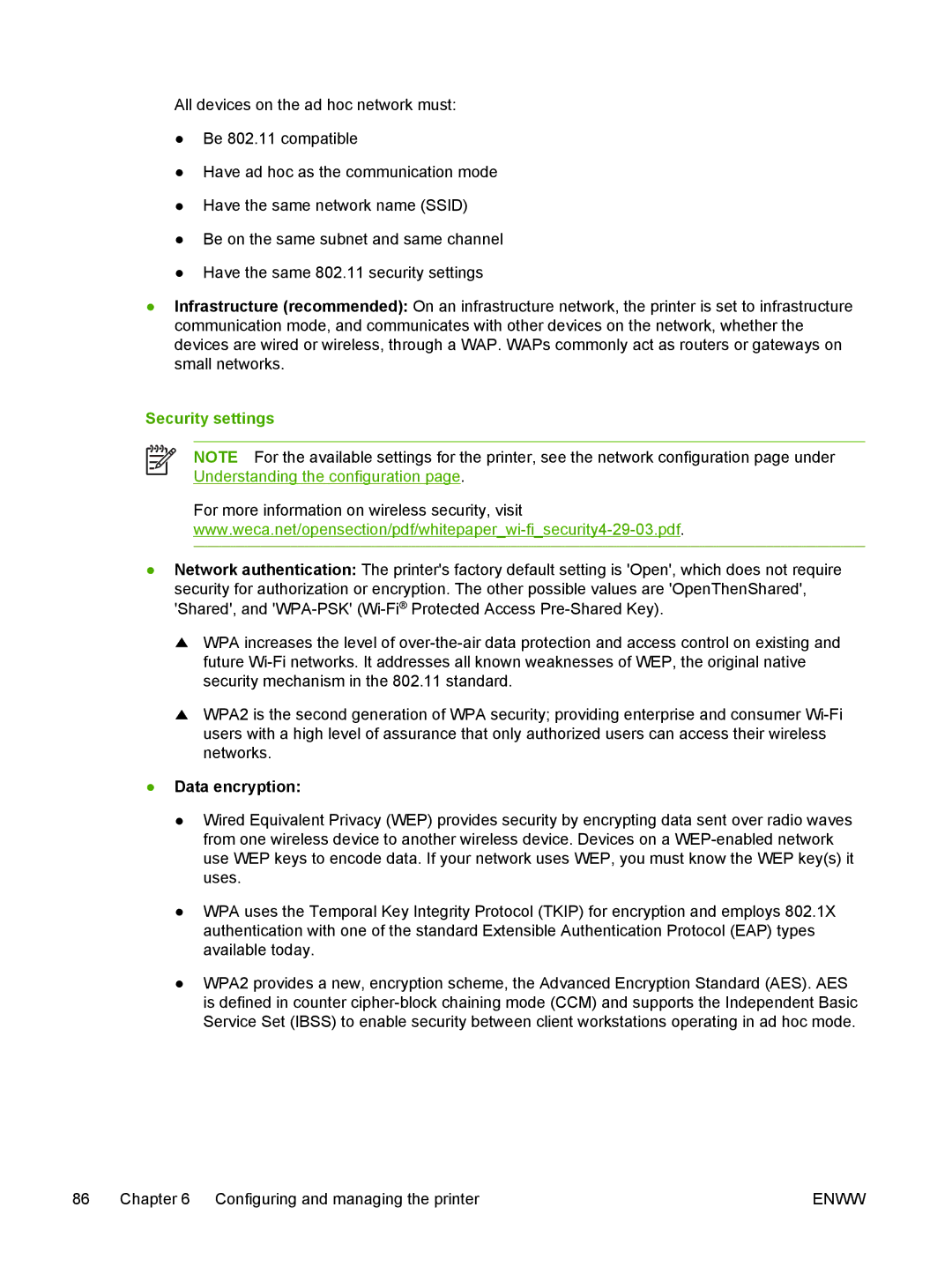
All devices on the ad hoc network must:
●Be 802.11 compatible
●Have ad hoc as the communication mode
●Have the same network name (SSID)
●Be on the same subnet and same channel
●Have the same 802.11 security settings
●Infrastructure (recommended): On an infrastructure network, the printer is set to infrastructure communication mode, and communicates with other devices on the network, whether the devices are wired or wireless, through a WAP. WAPs commonly act as routers or gateways on small networks.
Security settings
NOTE For the available settings for the printer, see the network configuration page under Understanding the configuration page.
For more information on wireless security, visit
●Network authentication: The printer's factory default setting is 'Open', which does not require security for authorization or encryption. The other possible values are 'OpenThenShared', 'Shared', and
▲WPA increases the level of
▲WPA2 is the second generation of WPA security; providing enterprise and consumer
●Data encryption:
● Wired Equivalent Privacy (WEP) provides security by encrypting data sent over radio waves from one wireless device to another wireless device. Devices on a
● WPA uses the Temporal Key Integrity Protocol (TKIP) for encryption and employs 802.1X authentication with one of the standard Extensible Authentication Protocol (EAP) types available today.
● WPA2 provides a new, encryption scheme, the Advanced Encryption Standard (AES). AES is defined in counter
86 | Chapter 6 Configuring and managing the printer | ENWW |
